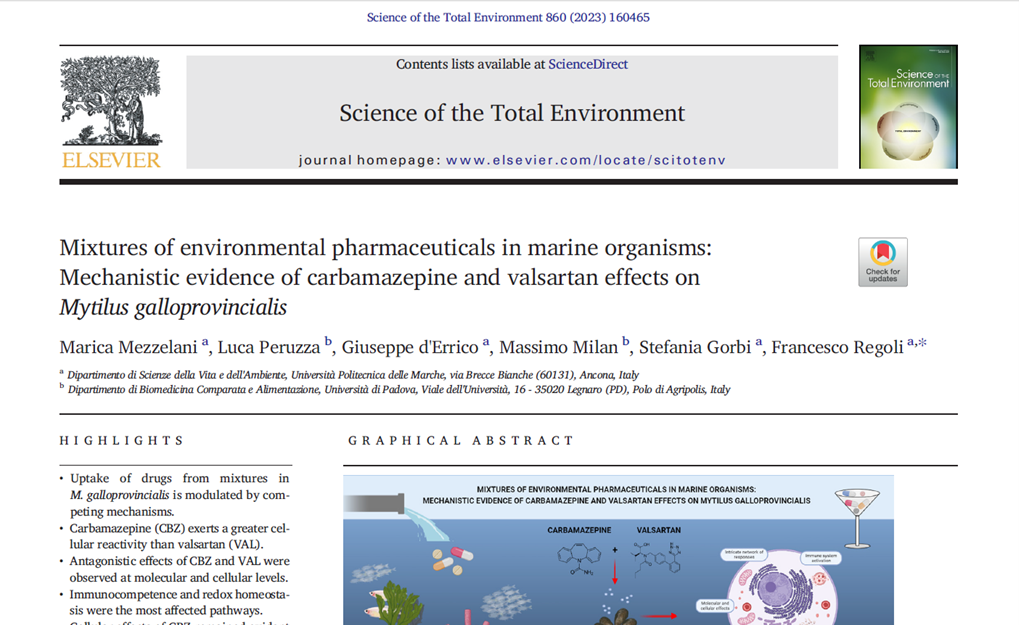First PHARMASEA paper published in 2023 in the scientific journal “Science of the Total Environment” talks about mechanistic evidence of carbamazepine and valsartan effects on the Mediterranean mussels
Unravelling the adverse outcomes of pharmaceuticals mixture represents a research priority to characterize the risk for marine ecosystems. In a recent study published in the scientific journal “Science of the Total Environment”, Marica Mezzelani and Co-Authors investigated, for the first time, the interactions between two of the most largely detected pharmaceuticals in marine species: carbamazepine (CBZ) and valsartan (VAL), elucidating mechanisms that can modulate bioaccumulation, excretion and the onset of toxicity. Mytilus galloprovincialis were exposed to environmental levels of CBZ and VAL dosed alone or in combination. Obtained results highlighted interactive and competing mechanisms between tested drugs, revealed by the much higher CBZ accumulation in mussels exposed to this compound alone, while an opposite trend was observed for VAL. Carbamazepine (CBZ) exerts a greater cellular reactivity than valsartan (VAL). Antagonistic effects of CBZ and VAL were observed at molecular and cellular levels and immunocompetence and redox homeostasis were the most affected pathways.
Cellular effects of CBZ remained evident even after depuration. Overall, new perspectives are highlighted for a more comprehensive risk assessment of environmental mixtures of pharmaceuticals.






